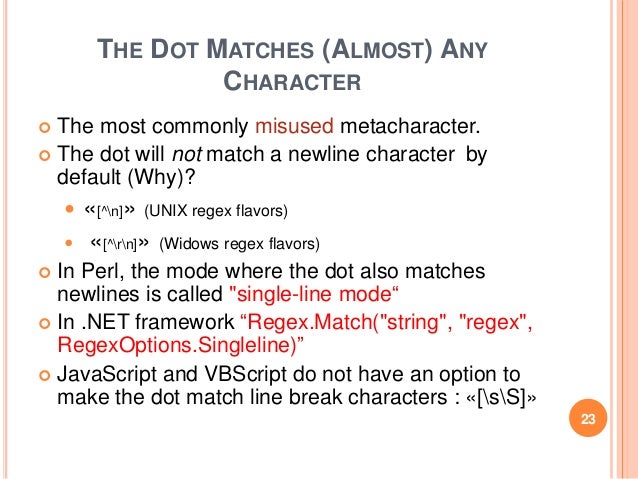
This implies that Python would first evaluate every backslash of a string and after this - without the necessary backslashes - it would be used as a regular expression. Regular expressions are represented as normal strings.īut this convenience brings along a small problem: The backslash is a special character used in regular expressions, but is also used as an escape character in strings. that's the way Perl, SED or AWK deals with them. Representing Regular Expressions in Pythonįrom other languages you might be used to representing regular expressions within Slashes "/", e.g. If you want to use regular expressions in Python, you have to import the re module, which provides methods and functions to deal with regular expressions. The following steps should be clear without any explanations:įinally, we have a complete match with s = sub :Īs we have already mentioned in the previous section, we can see the variable "sub" from the introduction as a very simple regular expression.

The first two positions are equal but not the third: Now we have to check if s and sub are equal. s is not equal to sub, so we don't have to proceed further with the next position of sub and s: Then, we have to compare the next positions. This is true and we mark it with the colour green.

In other words, we have to check at first, if sub is equal to s. In the first place, we check, if the first positions of the two string match, i.e. Is contained in the string s = "xaababcbcd"īy the way, the string sub = "abc" can be seen as a regular expression, just a very simple one. We show step by step with the following diagrams how this matching is performed: We check if the string sub = "abc"

We check in the following example, if the string "easily" is a substring of the string "Regular expressions easily explained!": When we introduced the sequential data types, we got to know the "in" operator. txt in regular expression notation ".txt" wouldn't make sense, it would have to be written as ".*.txt" Introduction txt" lists all files (or even directories) ending with the suffix. Globbing is known from many command line shells, like the Bourne shell, the Bash shell or even DOS. However, the semantics differ considerably. Wildcards, also known as globbing, look very similar in their syntax to regular expressions. There is another mechanism in operating systems, which shouldn't be mistaken for regular expressions. The first programs which had incorporated the capability to use regular expressions were the Unix tools ed (editor), the stream editor sed and the filter grep. Python, Perl, Java, SED, AWK and even X#. A great thing about regular expressions: The syntax of regular expressions is the same for all programming and script languages, e.g. It's possible to check, if a text or a string matches a regular expression.

Regular Expressions are used in programming languages to filter texts or textstrings. You can find an implementation of a Finite State Machine in Python on our website. A finite state machine (FSM), which accepts language defined by a regular expression, exists for every regular expression. In theoretical computer science, they are used to define a language family with certain characteristics, the so-called regular languages. The term "regular expression", sometimes also called regex or regexp, has originated in theoretical computer science.
#REGULAR EXPRESSION NOT TO INCLUDE HOW TO#
This introduction will explain the theoretical aspects of regular expressions and will show you how to use them in Python scripts. The aim of this chapter of our Python tutorial is to present a detailed and descriptive introduction into regular expressions.


 0 kommentar(er)
0 kommentar(er)
